new posts in all blogs
Viewing: Blog Posts Tagged with: early readers, Most Recent at Top [Help]
Results 1 - 15 of 15
How to use this Page
You are viewing the most recent posts tagged with the words: early readers in the JacketFlap blog reader. What is a tag? Think of a tag as a keyword or category label. Tags can both help you find posts on JacketFlap.com as well as provide an easy way for you to "remember" and classify posts for later recall. Try adding a tag yourself by clicking "Add a tag" below a post's header. Scroll down through the list of Recent Posts in the left column and click on a post title that sounds interesting. You can view all posts from a specific blog by clicking the Blog name in the right column, or you can click a 'More Posts from this Blog' link in any individual post.

By: DanP,
on 8/8/2014
Blog:
OUPblog
(
Login to Add to MyJacketFlap)
JacketFlap tags:
Books,
Music,
creativity,
language,
communication,
jackson,
bilingual,
Michael Jackson,
neuroscience,
genius,
IQ,
hernandez,
*Featured,
Psychology & Neuroscience,
Cognitive Neuroscience,
Arturo Hernandez,
bilingual brain,
arturo,
draehernandez,
child prodigy,
psychometric IQ,
psychometric,
lobes,
Add a tag
By Arturo Hernandez
That any person could become an expert in something if they simply spend about 3 hours per day for ten years learning it is an appealing concept. This idea, first championed by Ericsson and brought to prominence by Gladwell, has now taken root in the popular media. It attempts to discuss these differences in terms of the environment. The idea is that practice with the purpose of constantly gathering feedback and improving can lead any person to become an expert. If becoming an expert requires 10,000 hours, does a prodigy need 20,000.
Lets consider, Michael Jackson, as an example of a prodigy. He grew up in a musical family in Gary, Indiana just outside Chicago. His father Joe played in an R&B band. All of his siblings played music in one way or another. Unlike his siblings and father, Jackson did not really play any instruments. However, he would compose songs in his head using his voice. One morning he came in and had written a song which eventually became ‘Beat It’. In the studio, he would sing each of the different parts including the various instruments. Then the producers and artists in the studio would work on putting the song together, following his arrangements.
Work in cognitive neuroscience has begun to shed light on the brain systems involved in creativity as being linked to psychometric IQ. Work by Neubauer and Fink suggests that these two different types of abilities, psychometric IQ and expertise, involve differential activity in the frontal and parietal lobes. They also appear for different types of tasks. In one study, taxi drivers were split into a high and low group depending on their performance on a paper and pencil IQ test. The results showed that both groups did equally well on familiar routes. The differences appeared between groups when they were compared on unfamiliar routes. In this condition, those with high IQs outperformed those with low IQ. So expertise can develop but the flexibility to handle new situations and improvise requires more than just practice.
Reports of Michael Jackson’s IQ are unreliable. However, he is purported to have had over 10,000 books in his reading collection and to have been an avid reader. His interviews reveal a person who was very eloquent and well spoken. And clearly he was able to integrate various different types of strands of music into interesting novel blends. If we were to lay this out across time, we have perhaps the roots of early genius. It is a person who has an unusual amount of exposure in a domain that starts at an early age. This would lead to the ability to play music very well.
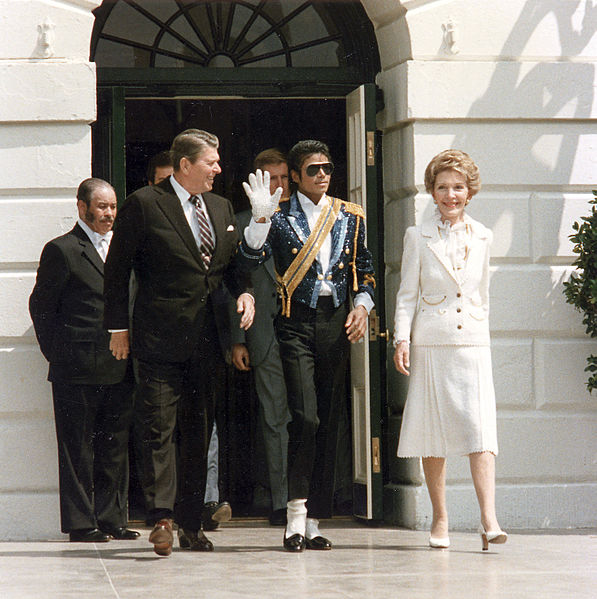
Jackson came from a family filled with many successful musicians. Many were successful as recording artists. Perhaps Michael started earlier than his siblings. One conclusion we can draw from this natural experiment is that creative genius requires more than 10,000 hours. In the case of Michael Jackson, he read profusely and had very rich life experiences. He tried to meld these experiences into a blended musical genre that is uniquely his and yet distinctly resonant with known musical styles.
The kind of creativity is not restricted to prodigies like Michael Jackson. Language, our ultimate achievement as a human race, is something that no other animal species on this planet shares with us. The seeds of language exist all over the animal kingdom. There are birds that can use syntax to create elaborate songs. Chinchillas can recognize basic human speech. Higher primates can develop extensive vocabularies and use relatively sophisticated language. But only one species was able to take all of these various pieces and combine them into a much richer whole. Every human is born with the potential to develop much larger frontal lobes which interconnect with attention, motor, and sensory areas of the brain. It is in these enlarged cortical areas that we can see the roots of creative genius. So while 10,000 hours will create efficiency within restricted areas of the brain, only the use of more general purpose brain areas serve to develop true creativity.
Arturo Hernandez is currently Professor of Psychology and Director of the Developmental Cognitive Neuroscience graduate program at the University of Houston. He is the author of
The Bilingual Brain. His major research interest is in the neural underpinnings of bilingual language processing and second language acquisition in children and adults. He has used a variety of neuroimaging methods as well as behavioral techniques to investigate these phenomena which have been published in a number of peer reviewed journal articles. His research is currently funded by a grant from the National Institutes of Child Health and Human Development. You can follow him on Twitter
@DrAEHernandez. Read his
previous blog posts.
Subscribe to the OUPblog via
email or
RSS.
Subscribe to only brain sciences articles on the OUPblog via
email or
RSS.
Image credit: Michael Jackson with the Reagans, by White House Photo Office. Public domain via Wikimedia Commons.
The post Michael Jackson, 10,000 hours, and the roots of creative genius appeared first on OUPblog.

So far we’ve had the pleasure of highlighting some really talented wildlife artists on
Illustration Pages. Today we’re adding another gifted artist to the roster, Terry Jackson. Terry’s painstakingly realistic depictions of animals are out of this world. The level of detail she captures with a pencil is light years beyond what could ever be captured by photography. This is true with many artists like Terry. Knowing that the human hand creates such beauty on paper adds an element to the artwork that can never be matched by a camera, which merely arranges pixels into a recognizable subject. No matter how realistic Terry draws something, it’s still her interpretation of realty. And that, in addition to how real her subjects look, is what makes her art so unique and special.
You might look at
Terry’s jaw dropping, graphite drawings and wonder, “How does she achieve such realism. What kinds of techniques yield such amazing results? How did she learn to do that?” All the beauty in Terry’s drawings does not lie solely within their realism. Her drawings contain emotion. Terry’s artwork captures a moment in time, a mother cuddling her young, a cat rolling in the grass, two massive elephants playing. These are seconds in time that have taken hours of intense patience and concentration to create by an artist with a deep connection to the animals she is drawing.

By:
Steve Novak,
on 8/11/2010
Blog:
Steve Draws Stuff
(
Login to Add to MyJacketFlap)
JacketFlap tags:
movie,
hollywood,
images,
poster,
mock-up,
steven,
novak,
google,
jackson,
fathers,
sons,
forts,
percy,
canonbridge,
fatcats,
Add a tag
Nope, Forts isn't gong to be made into a movie anytime soon. Sure, it would be nice, but it isn't very likely.
Damn Hollywood fatcats!
With the help of a little extra time though, google images, and my handy photoshop skills, I put together a poster anyway.
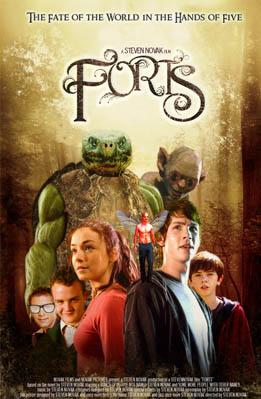
I'd pay seven bucks for that.
Steven

By: SarahN,
on 11/9/2009
Blog:
OUPblog
(
Login to Add to MyJacketFlap)
JacketFlap tags:
Health,
History,
Biography,
A-Featured,
Medical Mondays,
asthma,
Biographies of Disease,
Mondays,
Medical,
of,
biographies,
Jackson,
disease,
Mark,
Carlill v. Carbolic Smoke Ball Company,
Mark Jackson,
respiratory,
inhalation,
Add a tag

Mark Jackson is Professor of the History of Medicine and Director of the Centre for Medical History at the University of Exeter. His newest work, Asthma: The Biography, is a volume in our series Biographies of Disease which we will be looking at for the next few week (read previous posts in this series here). Each volume in the series tells the story of a disease in its historical and cultural context – the varying attitudes of society to its sufferers, the growing understanding of its causes, and the changing approaches to its treatment. In the excerpt below Jackson relays the story of Carlill v. Carbolic Smoke Ball Company.
On 7 December 1889, an American inventor, Frederick Augustus Roe, obtained a patent for a device that was designed both to cure and to prevent not only the deadly strain of influenza that was sweeping across Europe  from Russia, but also a wide range of other respiratory complaints, including catarrh, bronchitis, coughs and colds, croup, whooping cough, hay fever and asthma. Sold from offices in Hanover Square in London for ten shillings, the Carbolic Smoke Ball comprised a hollow ball of India rubber containing carbolic acid powder. When the ball was compressed, a cloud of particles was forced through a fine muslin or silk diaphragm to be inhaled by the consumer. Boosted by testimonials from satisfied customers and endorsements from prominent doctors, Roe was sufficiently confident that the contraption would prevent influenza that, in several advertisements placed in the Illustrated London News and the Paul Mall Gazette during the winter of 1891, he offered to pay £100 to any person who contracted influenza ‘after having used the ball 3 times daily for two weeks according to the printed descriptions supplied with each ball’. As if to demonstrate the sincerity of his offer, Roe claimed to have deposited £1,000 with the Alliance Bank in Regent Street.
from Russia, but also a wide range of other respiratory complaints, including catarrh, bronchitis, coughs and colds, croup, whooping cough, hay fever and asthma. Sold from offices in Hanover Square in London for ten shillings, the Carbolic Smoke Ball comprised a hollow ball of India rubber containing carbolic acid powder. When the ball was compressed, a cloud of particles was forced through a fine muslin or silk diaphragm to be inhaled by the consumer. Boosted by testimonials from satisfied customers and endorsements from prominent doctors, Roe was sufficiently confident that the contraption would prevent influenza that, in several advertisements placed in the Illustrated London News and the Paul Mall Gazette during the winter of 1891, he offered to pay £100 to any person who contracted influenza ‘after having used the ball 3 times daily for two weeks according to the printed descriptions supplied with each ball’. As if to demonstrate the sincerity of his offer, Roe claimed to have deposited £1,000 with the Alliance Bank in Regent Street.
In November 1891, Louisa Elizabeth Carlill, the wife of a lawyer, purchased a Carbolic Smoke Ball in London and carefully followed the instructions for use. When Mrs Carlill contracted influenza the following January, her husband wrote to Roe claiming the ‘reward’ offered in the advertisements. Suggesting that the claim was fraudulent, Roe refused to pay and provided Mr Carlill with the names of his solicitors. In the resulting legal case, initially heard in the court of Queen’s Bench and subsequently reviewed by Appeal Court, the dispute did not revolve primarily around whether the plaintiff had used the device correctly or indeed whether or not she had contacted influenza; these issues were accepted largely as fact. Rather, legal arguments focused on whether the advertisement constituted a valid offer, rather than ‘a mere puff’, as Lord Justice Bowen neatly put it, and whether Mrs Carlill’s use of the smoke ball constituted acceptance of that offer. By deciding unanimously in Mrs Carlill’s favour, the English courts set a precedent regarding unilateral contracts that continued to inform the legal doctrines of offer and acceptance, consideration, misrepresentation, and wagering throughout the twentieth century.
While Carlill v. Carbolic Smoke Ball Company became a celebrated moment in legal history, it al

By: Rebecca,
on 9/14/2009
Blog:
OUPblog
(
Login to Add to MyJacketFlap)
JacketFlap tags:
Robert Veatch,
Veatch,
Health,
ethics,
Law,
Science,
Current Events,
Philosophy,
doctor,
death,
A-Featured,
Medical Mondays,
Jackson,
Michael Jackson,
Robert,
Michael,
Add a tag

Robert Veatch is Professor of Medical Ethics at the Kennedy Institute of Ethics, Georgetown University. He received the career distinguished achievement award from Georgetown University in 2005 and has received honorary doctorates from Creighton and Union College. His new book, Patient, Heal Thyself: How the “New Medicine” Puts the Patient in Charge, he sheds light on a fundamental change sweeping through the American health care system, a change that puts the patient in charge of treatment to an unprecedented extent. In the original article below, Veatch looks at how the empowerment effected Michael Jackson’s medical decisions and the responsibility of his doctor.
Dr. Conrad Murray is the doctor who apparently administered a fatal dose of the anesthetic, propofol, to Michael Jackson in a desperate attempt to respond to his cries for help in getting some sleep. He has received rough treatment from the media. Jackson’s death has been ruled a homicide and the media are reporting that he will be charged with manslaughter. I think that judgment is too quick and want to come to the doctor’s defense.
The case is, of course, being tried in the press before we have all the details, but the likely scenario is emerging. Making some plausible assumptions, I think a case can be made for the doctor’s decisions. Let me assume, for purposes of discussion, that the doctor did not intend to kill Michael (He was reportedly being  paid $150,000 a month to be Michael’s full time physician. Even if he had completely abandoned his duty to serve the patient, he would be a fool to intend the death.) Let me assume that the lethal effects were foreseeable, but not inevitable side effects of a very potent drug. Let me also assume that Michael had been informed by Dr. Murray how dangerous the drug was and how unusual it was to use it for this purpose. Possibly, he had even told Michael that the drug’s labeling did not include the use of propofol outside of a hospital and that almost all physicians would refuse to use it this way.
paid $150,000 a month to be Michael’s full time physician. Even if he had completely abandoned his duty to serve the patient, he would be a fool to intend the death.) Let me assume that the lethal effects were foreseeable, but not inevitable side effects of a very potent drug. Let me also assume that Michael had been informed by Dr. Murray how dangerous the drug was and how unusual it was to use it for this purpose. Possibly, he had even told Michael that the drug’s labeling did not include the use of propofol outside of a hospital and that almost all physicians would refuse to use it this way.
With these assumptions, a prosecutor will have a difficult time accusing the doctor of a crime. It is not even clear to me that “homicide” is the right term for the death. First, it is important to realize that “off-label” uses of drugs by doctors is not illegal. It is done all the time when a physician becomes convinced that it in the patient’s interest. Second, it is critical to understand that medical choices about what is in a patient’s interest are directly dependent on the patient’s goals and values. They cannot simply be read out of a textbook as if medical science can prove what is in a particular patient’s interest. (Think about whether aggressive chemotherapy is in a terminal cancer patient’s interest or whether an abortion is in the interest of a pregnant woman.) The patient’s interest is necessarily a subjective matter about which only the patient can have direct knowledge.
It seems clear that Michael was in the advanced stages of insomnia and was in excruciating agony from persistent lack of sleep. That is an awful situation about which patients often have to make desperate choices. None of us can know what was in Michael’s head that caused the insomnia or led him to plea for pharmacological intervention. We do know that other drugs had been used even that fateful night (benzodiazepines that are often used to reduce anxiety and induce sleep). These other drugs had failed to solve the problem and made the use of the propofol even more dangerous, something Dr. Murray surely knew and presumably had told Michael.
Now the question for Dr. Murray and for Michael Jackson is, given his desperate situation, is the only drug that will give him some sleep worth the very great risk of side effects, even death? Surely, for most of us the answer would be negative, but that doesn’t mean it was Michael’s answer. Given that he had apparently received the drug many previous times without side effects, I don’t see how we can claim that Michael would be wrong to decide that the risk would be worth it in his case. Deciding whether the drug is “worth it” is a value judgment, not a scientific fact that the doctor can look up in a book. Even if almost everyone else would have decided not to try the desperate off-label use, I don’t know how we can say Michael’s gamble was wrong for him.
But, you might say, even if Michael’s judgment was understandable, surely Dr. Murray was wrong to go along with his patient’s demand. Surely, other physicians would not have agreed. A physician is supposed to be a responsible professional who has the right not to go along with a patient’s very unusual and risky demand. Most physicians would have refused to provide the propofol (at least outside of a hospital) and that is understandable, but this does not prove that Michael’s value judgment about the risk was wrong or that Dr. Murray was wrong to comply. Some medical issues are appropriately judged by what is called a “standard of care.” The correctness of the physician’s behavior is judged by what his colleagues similarly situated would have done. This, however, is not a decision that should be judged by that standard. If it is possible that Michael had made a rationally defensible decision that the risk was worth it for him, then a physician is within his rights to decide to cooperate in a legal behavior if he so chooses. He surely would have had the right not to provide the dangerous drug for off-label use, but he also has the right to decide it is a tolerable risk. If he does so after the patient is adequately informed, I don’t see how we can fault him assuming that the lethal effect was not intended.
This turns out to be crucial for the rest of us if we are to get high-quality, rational medical care. We have for many years recognized that most powerful, valuable drugs have anticipated side effects. If we choose to take the risk and the side effect occurs, we don’t say that the choice was a mistake. If the side effect is death, we don’t say it was a homicide. Provided the intended beneficial effects are good enough, we say that the side effect is tolerable even if it is foreseen. That, in fact, is precisely the justification for doctors’ use of narcotics to control severe pain in cancer patients even though they know that the side effect can be respiratory depression and even death. Most ethical systems have long acknowledged that such “unintended, but foreseen” deaths are tolerable. Normally, such a death is not deemed a “homicide.” Just may be, if we put ourselves in Michael’s shoes and plug in the value judgments he made, we can understand why Dr. Murray, apparently with great reluctance, was willing to go along. I can’t fault him if that was what he did.




By: Rebecca,
on 6/30/2009
Blog:
OUPblog
(
Login to Add to MyJacketFlap)
JacketFlap tags:
A-Featured,
1950s,
Media,
Elvis,
Jackson,
1960s,
1980s,
John Lennon,
Michael Jackson,
Lennon,
Elvis Presley,
Joseph,
Farrah,
Michael,
Farrah Fawcett,
Joseph Conrad,
Presley,
Fawcett,
Conrad,
Music,
Current Events,
American History,
John,
Add a tag
Elvin Lim is Assistant Professor of Government at Wesleyan University and author of The Anti-intellectual Presidency, which draws on interviews with more than 40 presidential speechwriters to investigate this relentless qualitative decline, over the course of 200 years, in our presidents’ ability to communicate with the public. He also blogs at www.elvinlim.com. In the article below he reflects on nostalgia for the 80’s. See his previous OUPblogs here.
than 40 presidential speechwriters to investigate this relentless qualitative decline, over the course of 200 years, in our presidents’ ability to communicate with the public. He also blogs at www.elvinlim.com. In the article below he reflects on nostalgia for the 80’s. See his previous OUPblogs here.
Journalists are not usually in the habit of looking back. They are charged to deliver “breaking news” to us. Novelty is the coinage of the newsroom, not history. Yet this week, the media’s preponderant coverage of the life and death of Michael Jackson has been stridently nostalgic. It reveals a culture needing and ready to sing an ode to the 1980s.
We cannot turn back time, but we can mark its passing. Up till last week, popular culture hadn’t had the chance to address the passing of an 80s superstar and with that, the 1980s. We were given occasion to mourn and contemplate the passing of the 1950s with Elvis Presley’s untimely death, and the passing of the 1960s with John Lennon’s death. So we have sung an ode to the post-war consensus, as we have sung an ode to the cultural revolution.
But enough of the 80s has remained with us - MTV, Nintendo, Reaganomics - not defunct but writhing for relevance, that we have not dared sing its eulogy. Michael Jackson’s and Farrah Fawcett’s death has served us a dramatic notice that it may be time.
After all, it is unlikely that we will see another Michael Jackson. In our era where songs are downloaded one at a time, no one is likely to sell a 100 million records (of “Thriller” or any other album) again. The 80s are over, but it has taken us three decades to find a moment to collectively mark and mourn its passage.
Tragic deaths are compelling not only for human interest reasons, but for the decisive statement about our mortality they make. For if even iconic characters who once defined their age can be so suddenly ejected from the remorseless flow of history, then there is surely no stopping the march of time.
It is no surprise that Michael Jackson is more beloved posthumously than he was all of this decade. Elvis Presley too, had become more and more of a has-been as the 60s progressed. Time is never forgiving - our only feeble antidote is nostalgia. So wrote Joseph Conrad, “Only a moment; a moment of strength, of romance, of glamor–of youth! … A flick of sunshine upon a strange shore, the time to remember, the time for a sigh, and–good-bye!–Night–Good-bye…!”
If the 1980s and whatever the decade repesented are indeed over, then businessmen, journalists, and especially politicians - take note! Nostalgia can only occur when the past has been rendered past.


By: Stephanie,
on 5/7/2008
Blog:
OUPblog
(
Login to Add to MyJacketFlap)
JacketFlap tags:
Oxford,
A-Featured,
Oxford Etymologist,
Lexicography,
Old,
oupblog,
Jackson,
english,
Andrew,
etymologist,
Anatoly,
Liberman,
OUP,
etymology,
ok,
oll,
korrect,
Kinderhook,
Blog,
Add a tag

By Anatoly Liberman
All those who pose as experts in etymology tend to receive questions about certain popular words, with exotic slang and obscenities attracting the greatest attention. (The F-word is at the top of the list. Is it an acronym? No, it is not.) Beginning with my old post on copasetic, I tried to anticipate some such questions, and for a long time I have been wondering how to tell the story of OK, an object of undying interest. The excitement of this oft-repeated story has long since worn off, and only the thought that perhaps I can add nuance (as highbrows say) to the OK epic and thus partly avoid the otherwise inevitable triviality allows me to continue.
OK has been traced to numerous languages, including, Classical Greek, Finnish, Choctaw, Burmese, Irish, and Black English (Black English caught the fancy of many journalists, who in the sixties “rediscovered” Africa without going there and gained the reputation of radicals at no cost). The literature is also full of suggestions that the sources of OK have to be sought in German, French, or Danish. This guessing game presents interest for two reasons. First, it shows that many people do not realize the importance of research in historical linguistics. Not only do they risk offering conjectures without as much as a cursory look at the evidence: they do not even take the trouble to get acquainted with the views of their equally uninformed predecessors. One constantly runs into statements like: “I am surprised that it has not occurred to anyone…”, whereupon an etymology follows that was offered fifty years earlier and rehashed again and again. (Compare the review I once read of a performance of The Swan Lake. The reviewer said that this was the best performance of the ballet he could remember. I concluded that it was either the first time he had seen The Swan Lake or that he suffered from amnesia.) In my database, I have 78 citations for OK, mainly from the press, and this number could have been doubled or tripled if I had made the effort to collect all the letters on the subject printed in newspapers; I availed myself of only some of them. Variations on the same hypotheses keep surfacing again and again. Second, even specialists may not always realize that in dealing with a word like OK, a plausible derivation presupposes two steps. OK spread through the United States like wildfire in the early 1840’s and stayed. Regardless of whether the lending language is believed to be Choctaw or Finnish, the etymologist has to explain why OK became popular when it did. A similar approach is required for all slang and for many stylistically neutral words. Any innovation, be it bikini, recycling, a redistribution of voting districts, or a neologism, comes from a smart individual and is either rejected or accepted by the public. If a word has been rejected, we usually know little or nothing about its history (a stillborn has a short biography). But if it has survived, we should explain where it originated and what contributed to its longevity. Suppose OK is Greek. Why then was its radiation center the United States? And why in the forties of the 19th century? No etymology of OK will be valid while such questions remain unanswered.
In our case, the answers are known. Today we confuse one another with cryptic acronyms like LOL “laugh out loud” and AWOL (here a gloss is not needed). Linguistic tastes do not seem to have changed since the 1830’s. Facts give credence to the belief that OK stands for oll korrect, but not to the legend that this was the spelling used by Andrew Jackson. Although the 7th President of the United States would not have been hired as a spelling master even by a rural school, anecdotes about his gross illiteracy have little foundation in fact. The craze for k, as it was called (Kash, Kongress, and so forth), added to the staying power of the abbreviation OK. But OK would probably have disappeared along with dozens of others if it had not been used punningly by the supporters of Van Buren, the next president, born in Old Kinderhook, New York. To be sure, it could still have vanished once the campaign was over, but it did not. It even became the most famous American coinage, understood far beyond the borders of the United States. This is the account one finds in dictionaries, but dictionaries, quite naturally, do not dwell on the history of the search, which entailed decades of studying documents, broken friendships, and the making of a great reputation.
It was Allen Walker Read who reconstructed the Old Kinderhook link in the rise of OK, and his discovery became a sensation: first The Saturday Review published an article by him (1941), and years later an interview devoted to OK appeared in New Yorker. Read is also the author of many other excellent works, but few people outside academia have heard about them. At the end of one of his article on OK (he brought out four major articles on the subject and several addenda, all of them published in the journal American Speech), Read expressed his surprise that the origin of OK, which everybody must have known in Van Buren’s days, was forgotten so soon. However, the case is not unique. People regularly forget the pronunciations that were current only a generation ago and the events that led to the coining of words.
Read had to dispose of the possible pre-1839 existence of OK. And this is where personal animosities came in. One of the editors of the Dictionary of American English was Woodford A. Heflin, an excellent specialist, whose contributions clarified a good deal in the emergence of OK. But he put too much trust in the following line found in the journal of William Richardson, a businessman from Boston. In his detailed description of a journey to New Orleans (1815), Richardson wrote: “Arrived in Princeton, a handsome little village, 15 miles from N Brunswick, ok & at Trenton, where we dined at 1 P.M.” The ok & part makes no sense. Richardson may have begun a sentence that he did not finish, or a scribal error may have occurred. The amount of interlining and correction in the manuscript is considerable. Even if the sentence can be understood without emendation, the mysterious ok need not mean what it means to us, for the well-educated Richardson would hardly have infused a piece of low slang after mentioning N Brunswick. This was Read’s conclusion, but Heflin insisted that the 1815 occurrence of OK was the earliest we have. The strife that ensued soured the relations between the two scholars. Heflin went public and fought what he called an incorrect etymology of OK in the pages of American Speech. Read responded (the journal showed laudable impartiality and let both opponents express their views). The battle was fought in the sixties, long after Read’s initial article appeared in The Saturday Review.
Read examined the manuscript of Richardson’s journal, but to the best of my knowledge, he never mentioned the fact that he had not done it alone. This is what Frederic C. Cassidy wrote in 1981 (American Speech 56, 1981, p. 271): “After many attempts to track down the diary, Read and I at last discovered that it is owned by the grandson of the original writer, Professor L[awrence] Richardson, Jr., of the Department of Classic Studies at Duke University. Through his courtesy we were able to examine this manuscript carefully, to make greatly enlarged photographs of it, and to become convinced (as is Richardson) that, whatever the marks in the manuscript are, they are not OK. The Richardson diary does not constitute evidence for the currency of OK before 1839.” What an anticlimax! I only don’t understand why Read did not say all of it himself. In 1981 he was an active scholar guarding his priority most carefully, and there is no doubt that if Cassidy’s report had not been accurate, he would have made his disagreement known.
Here ends my story of OK, nuance and all.

Anatoly Liberman is the author of
Word Origins…And How We Know Them as well as
An Analytic Dictionary of English Etymology: An Introduction. His column on word origins,
The Oxford Etymologist, appears here each Wednesday. Send your etymology question to
[email protected]; he’ll do his best to avoid responding with “origin unknown.”
ShareThis

By:
Sondra Santos LaBrie,
on 2/26/2008
Blog:
Happy Healthy Hip Parenting
(
Login to Add to MyJacketFlap)
JacketFlap tags:
picture books,
new zealand,
belgium,
fairy tales,
authors,
australia,
illustrators,
england,
early readers,
south korea,
toddler tales,
fall 2008,
jack russell,
jack russell,
early readers,
toddler tales,
england,
south korea,
fall 2008,
illustrators,
belgium,
Add a tag
Technically, our Spring 2008 titles will not be released until March 1st, and yet, I'm asking you all to fast forward a little bit to talk about fall. Yes, that's right. I will now share the September 1st, Fall 2008, forthcoming books from Kane/Miller. Included among the twelve books are two Toddler Tales that are being translated into Spanish (Los hermanintas son... - Little Sisters Are...- and Los hermanitos son... - Little Brothers Are...), Book #8 in the Jack Russsell Series - The Kitnapped Creature, four picture books (The Big Little Book of Happy Sadness, The Story of Growl, Something for School, There's No Such Thing as Ghosts), a modern-day fairy tale (Singing to the Sun), and four early readers (The Wicket Chronicles #1 and #2: Ely Plot and Fen Gold, Snake and LIzard, and Wombat & Fox.
Authors for this forthcoming season are Jucy Horacek, Vivian French, Colin Thompson, Terry Denton, Joy Cowley, Hyun Young Lee, Joan Lennon, Sally & Darrel Odgers, Emanuelle Eekhout, and Beth Norling. Gavin Bishop and Jackie Morris join us as new illustrators we're publishing and countries represented include our first book from New Zealand, along with Australia, England, South Korea, and Belgium.
More details to come...

A Preamble
I'm one of those moms who never censors what my children read. Occasionally I'll wince when a certain book comes home, but I truly believe any reading is good reading. Sure, my 12-year-old mixes Dickens and Wilkie Collins with some of the lamest YA I've run across. I won't lie. But she's a reader, and that's what's important. (She reads great YA too, don't get me wrong. She's reading Libby Bray's latest now.)
My newly-minted-7-year-old just checked out his first chapter book. He's gone from 0 to 60 in the reading department this year and he was so proud of his first selection: A Pokemon book. Did I wince? Absolutely. Am I thrilled to write down each chapter on his reading sheet for school? You bet I am. This is a day to be celebrated.
That being said, I've been browsing the library and the bookstore for youngish chapter books I think he'd like. Megan McDonald's Stink: The Incredible Shrinking Kid caught my attention right away. Now on to the review:
Stink: The Incredible Shrinking Kid #1
by Megan McDonald, illustrations by Peter H. Reynolds
Stink is short. He's the shortest kid in his class, and the shortest kid in his family. But being short is the least of his problems. The biggest? His big sister is none other than Judy Moody and she happily reminds poor Stink that he's short.*
"Bad news," said Judy.
"What?" asked Stink.
"You're shorter than you were this morning. One quarter inch shorter!"
Poor Stink. It's difficult to be reminded of your short-comings on a daily basis, but he's an optimistic kid with a ton of energy. Stink loves school and participates wholeheartedly in taking care of the class pet (a painful chapter), in Presidents' Day activities, and in doing his homework. I loved the chapters concerning Stink's Presidents' Day homework assignments, assignments he devotes to his favorite President, James Madison. Stink's first name is also James, and James Madison was only 5 feet 4 inches tall.
McDonald writes in a winning easy-to-read style; her prose is contemporary, lively, and full of good humor. Peter H. Reynolds illustrates the Stink books both with friendly pencil drawings of Stink, his family, and his class and with Stink's wonderful comics. (Stink's comic strips are genius. They are both straightforward and nonsensical in the way only children's stories can be.)
Stink: The Incredible Shrinking Kid is highly recommended for the new independent readers of the world.
--------------------
*My kids are Judy and Stink. The Stink books are for all the younger brothers of the world.
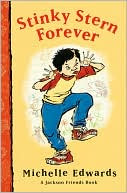
The early reader must be the most difficult book of all to write. To create something new, something real from so few words of such limited complexity is a challenge not every writer can meet. Sure, there are masters of the genre. Cynthia Rylant comes immediately to mind. But, it is unusual to come across a new(ish) author writing for the newly reading who writes with as much honesty and emotional depth as does Michelle Edwards.
Stinky Stern Forever is the fourth volume of The Jackson Friends series--a series of short chapter books designed for school-aged children working on reading fluently on their own. Jackson Magnet is a school populated by children of many different backgrounds and family situations. Our narrator, Pa Lia Vang, decorates her snowflake with Hmong patterns, for example. A boy named Vladmir Solbokin returns from ESL to Mrs. Fennessey's classroom. Another child, Bridgett, doesn't have a mother living at home. Mrs. Fennessey's class also has a resident bully, a boy named Matthew--or Stinky--Stern.
Stinky likes to tease the other kids in the class and make a scene. On the day Stinky Stern Forever begins, Stinky Stern ruins Pa Lia's snowflake with a glob of glue. Then, after school, Stinky Stern is hit by a van when he runs into the street without looking. Pa Lia witnesses the accident and wonders, "Will Stinky be okay? He is so quiet. So still."
Stinky isn't okay. Stinky dies. When Pa Lia returns to school the next day, Mrs. Fennessey tells her class the news and asks the children to share their stories about Matthew Stern. Pa Lia, a quiet, observant child, finds she can't speak right away. She feels confused because she didn't like Stinky Stern. She listens to her classmates' stories--some good, some bad, some funny--and draws, creating pictures of what Stinky loved in life. Finally, after listening to all the children in her class, Pa Lia admits, "'I was so mad at Stinky yesterday. He tried to ruin my snowflake. I was still mad at him when I saw the accident.'" Speaking the truth out loud, Pa Lia realizes, "a heavy bird had just flown from its nesting spot on her heart." Pa Lia is finally able to say what hurts her so much: "'Stinky, get up. This is not funny, I thought. But I knew he couldn't get up. And that was sadder and hurt more than anything Stinky ever said or did to me.'"
Wow. Consider the words Edwards uses here--short words most first graders can read on their own. Despite this limitation, she manages to create a story that is interesting, important, and relevant to children. And, because Stinky Stern Forever is for children, it ends on a positive and hopeful note. The children of Mrs. Fennessey's classroom celebrate their unique, multi-faceted classmate through story and conclude by showering his desk with their beautiful snowflakes.
Stinky Stern Forever is a book you can share with any child experiencing a loss. However, I also think it will be appreciated by children who haven't experienced directly the death of a friend or classmate. We adults, more experienced in loss and death, are easily traumatized by the death of a child, even if that death is fictional. Children, on the other hand, may appreciate Edwards' message here--that everyone has value, everyone has a story and a talent, everyone is loved by someone. Even Stinky Stern.
===============================
Stinky Stern Forever is the first of Michelle Edwards' The Jackson Friends books I've read. I'm purchasing the first three as soon as I can bear to enter a retail establishment again. (Sometime in late January, probably.) I haven't been this impressed in ages. And, I'm not alone. Check out these other blog reviews:
Wordswimmer
A Fuse #8 Production
It takes strong, skillful strokes to swim through a stormy sea without drowning or veering off-course.
Writing about death--one of the stormiest of seas for readers of any age--is tricky, but it's especially challenging when you're writing a story for children between the ages of six and nine who are just learning to read on their own.
Some adults might say it's dangerous--if not impossible--to

By: Mark Peter Hughes,
on 7/5/2007
Blog:
Lemonade Mouth Across America! Blog
(
Login to Add to MyJacketFlap)
JacketFlap tags:
starbucks,
williams,
elvis,
louisiana,
hank,
elvis,
jackson,
piggly wiggly,
birmingham,
sarah campbell,
mississippi,
hester bass,
hank,
jackson,
louisiana,
piggly wiggly,
birmingham,
sarah campbell,
mississippi,
hester bass,
Add a tag
Today I share the blogging with my son, Evan, age nine, who earlier today wrote an update of our time in the deep south (see below). Evan's comments will be in a bigger font. We just arrived in Bryan, Texas a moment ago, so I don't have much to say about Texas yet except that it is big and dark and rainy. [Oh, I just realized that as I type this, it is techincally by 41st birthday! :-) ]
EVAN: Ok, so yesterday we left Atlanta (we got up at 7:00) and did a 2 and a half hour drive to Alabama, and all Of a sudden, we see this sign that said: ENTERING ALABAMA CENTRAL TIME ZONE . What?! We shouted. Then the clock that before said 9:49 (which was when we were supposed to arrive) went down to 8:49. We could have slept an hour later! Well, at least we get to relive the past hour, said my dad. On the road we made up a game. The game was, if you saw a water tower and shouted torre de agua (that’s Spanish) first, then you would get a point. At the end of the trip, whoever had the most points, won. To me, the driving wasn’t very long, but that’s probably because I was waching tv.
MARK: I love the south. It's green and lush, and the people are friendly and the weather has been beautiful. I also love that it has a chain of grocery stores called Piggly Wiggly. Whevenver we see one, we Hugheses are all about the Piggly Wiggly! I took this picture through the windsheild of our car on our way to Birmingham, AL:

Oh yes, Piggly. I will follow...
One thing I do miss about Massachusetts, though, is the availability of Starbucks. In fact, I've been on a daily quest to find one anywhere near where we go. On the way to Birmingham I found one! I was so pleased, I took a picture of my grande Gazebo blend.

Evan: We went to the Alabama welcome center and my dad and me got Hank Williams posters. Hank Williams is like an Elvis to country music. My dad was very happy. I was happy too, except I had never heard of Hank Williams before this. But I'm sure he must be pretty good.
Mark: Because of the unexpected time-change (what? did we miss a memo or something?), we arrived in Birmingham earlier than planned, which allowed us time to look around. Since Birmingham metal-working played a big role in the city's history, they have a huge statue of Vulcan, the Roman god of the fire and forge.

EVAN: Later, we had lunch with Hester Bass the author of So Many Houses, and her family (father Clayton, kids Anderson and Miranda) in Birmingham. We ate at a Cracker Barrell, a southern place I'd never eaten before. It was good. My mom and dad ate southern food. I ate grilled cheese. It was good. Hester gave us copies of her book, which was very nice of her.
Mark: In addition to being the author of the early reader So Many Houses, Hester is also the author of a soon-to-be released picture book biography of American artist, Walter Inglis Anderson, to be illustrated by the acclaimed E. B. Lewis and published by Candlewick Press. Hester and her family were amazingly kind to drive all the way down to Huntsville to meet with us. It's lovely to meet such wonderful people when you're far from home. Many thanks to the 'Bama Basses, our new friends!




EVAN: Next, we had dinner with the Campbell family In Jackson, Mississippi. I played with three boys named Graem, Nathan and Douglas. They had a big snail called a wolf snail. I let it crawl up my arm. It was so cool!
Mark: Sarah is the author and photographer of an upcoming picture book about wolf snails, snails that eat other snails -- an amazing creature I'd never heard of before. Her photographs are absolutely beautiful and her book will be published in the Spring. Although we were total strangers, Sarah and Richard and their boys fed us and treated us like family. We had a wonderful Mississippi evening which we will never forget -- complete with fireworks set off by neighbors. Thanks you, Campbells, our other new friends in the south!



This morning (actually, yesterday morning now) we stopped by at Lemuria Books in Jackson, a cool independent bookstore with a relaxing atmosphere. Here we are with a very nice bookseller named Ciel.

Lots of traffic problems on the way through Louisianna to Bryan, TX, so it took us much longer than it should have. Still, we're here safe, sound, and happy. Soon I'll actually go to bed.
A big, Texas good night to y'all.
-- Mark


Thank you all for helping me compile a list of excellent early readers. I've put together a pdf list, printed it out, and highlighted the ones I plan on buying for summer work.
Just click here to read or print the Early Reader list.**
===================================
** It make take a few minutes to open. Let me know if you have any problems or if you'd rather receive it by e-mail.
Here are a few things I've been thinking about today, but haven't had time to write coherently about:

Only one month until summer and I am already planning to put my kids to work. For my eldest this means Russian lessons, and for my youngest--reading.
I've never worked with small children professionally, but what I've learned from having two of my own is that each learns to read differently. The eldest went from 0 to 60 in about three weeks. My youngest is learning word by word. In fact, he's taking a "whole language" approach on his own.
So, I'm in need of some early readers. Here's what I remember from when I went through this six years ago:
- Frog and Toad, but of course
- Henry and Mudge
- Amanda and Oliver
See why I need some help? Let me add that my kid is a sucker for anything with animals and anything to do with science and technology. Stories having to do with complex interpersonal relations (someone's left out, someone is teased, someone is angry, etc.) seem to make him nervous.
Just asking this question makes me grateful for the kidlit blog world. (I couldn't get this information from the newspapers.) In just 24 hours I'll have an entire booklist of excellent, intelligent titles. So thank you for being here!












 from Russia, but also a wide range of other respiratory complaints, including catarrh, bronchitis, coughs and colds, croup, whooping cough, hay fever and asthma. Sold from offices in Hanover Square in London for ten shillings, the Carbolic Smoke Ball comprised a hollow ball of India rubber containing carbolic acid powder. When the ball was compressed, a cloud of particles was forced through a fine muslin or silk diaphragm to be inhaled by the consumer. Boosted by testimonials from satisfied customers and endorsements from prominent doctors, Roe was sufficiently confident that the contraption would prevent influenza that, in several advertisements placed in the Illustrated London News and the Paul Mall Gazette during the winter of 1891, he offered to pay £100 to any person who contracted influenza ‘after having used the ball 3 times daily for two weeks according to the printed descriptions supplied with each ball’. As if to demonstrate the sincerity of his offer, Roe claimed to have deposited £1,000 with the Alliance Bank in Regent Street.
from Russia, but also a wide range of other respiratory complaints, including catarrh, bronchitis, coughs and colds, croup, whooping cough, hay fever and asthma. Sold from offices in Hanover Square in London for ten shillings, the Carbolic Smoke Ball comprised a hollow ball of India rubber containing carbolic acid powder. When the ball was compressed, a cloud of particles was forced through a fine muslin or silk diaphragm to be inhaled by the consumer. Boosted by testimonials from satisfied customers and endorsements from prominent doctors, Roe was sufficiently confident that the contraption would prevent influenza that, in several advertisements placed in the Illustrated London News and the Paul Mall Gazette during the winter of 1891, he offered to pay £100 to any person who contracted influenza ‘after having used the ball 3 times daily for two weeks according to the printed descriptions supplied with each ball’. As if to demonstrate the sincerity of his offer, Roe claimed to have deposited £1,000 with the Alliance Bank in Regent Street.




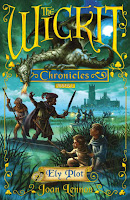
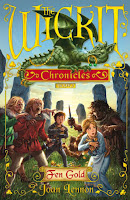


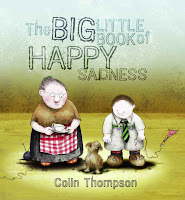
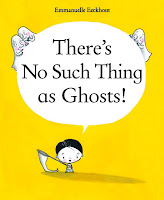
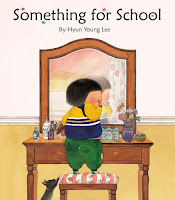
















Just surfed by and found Singing to the Sun here, so thought I would leave a note.
Max the cat is so pleased that his fame is spreading as he is the model for the cat in the book.
Best wishes from Jackie and the Ginger cats
Jackie,
I'm so pleased that you came across this post. We're excited about this amazing "new" fairy tale and look forward to having you join the K/M family!
SSL